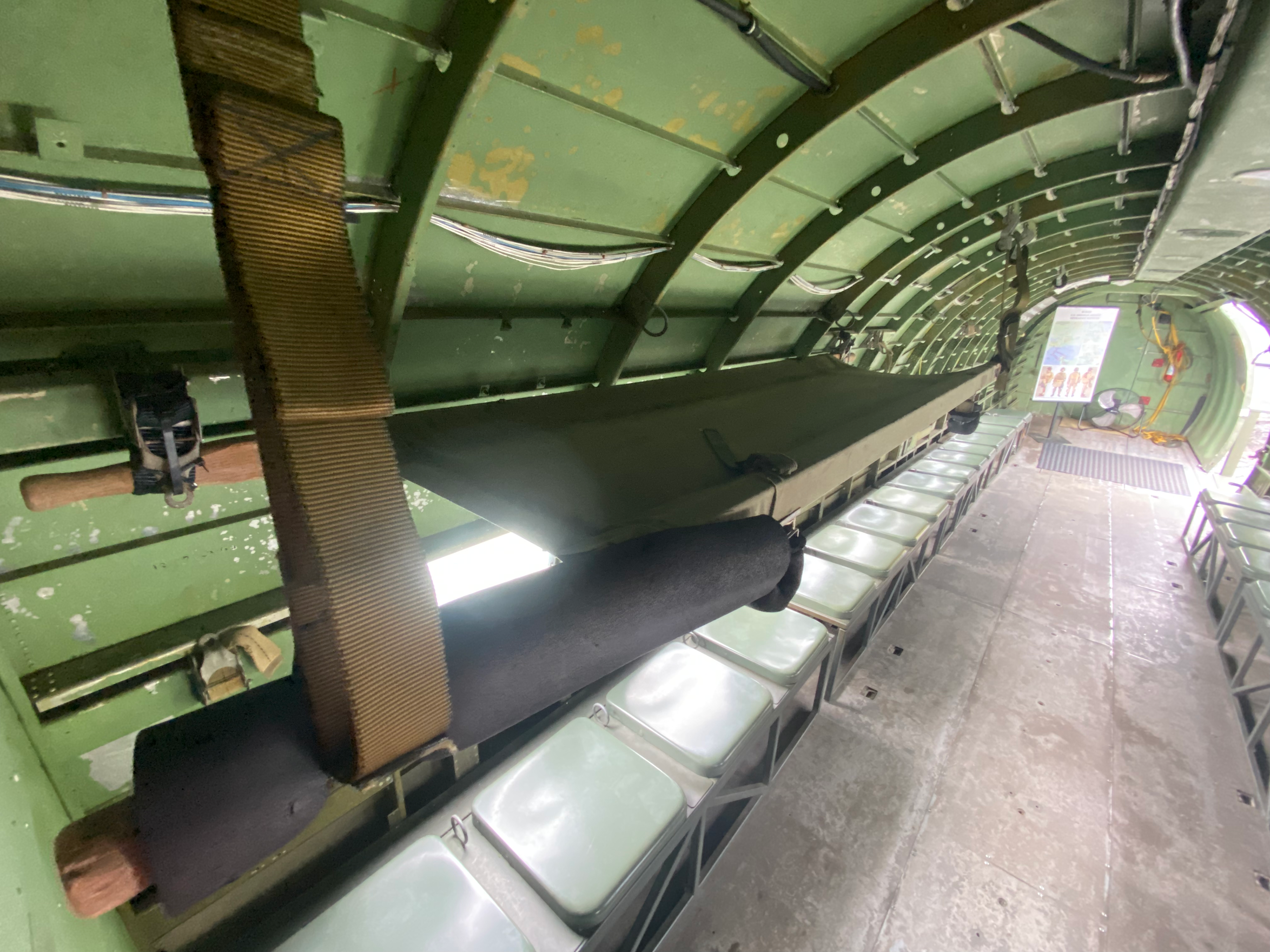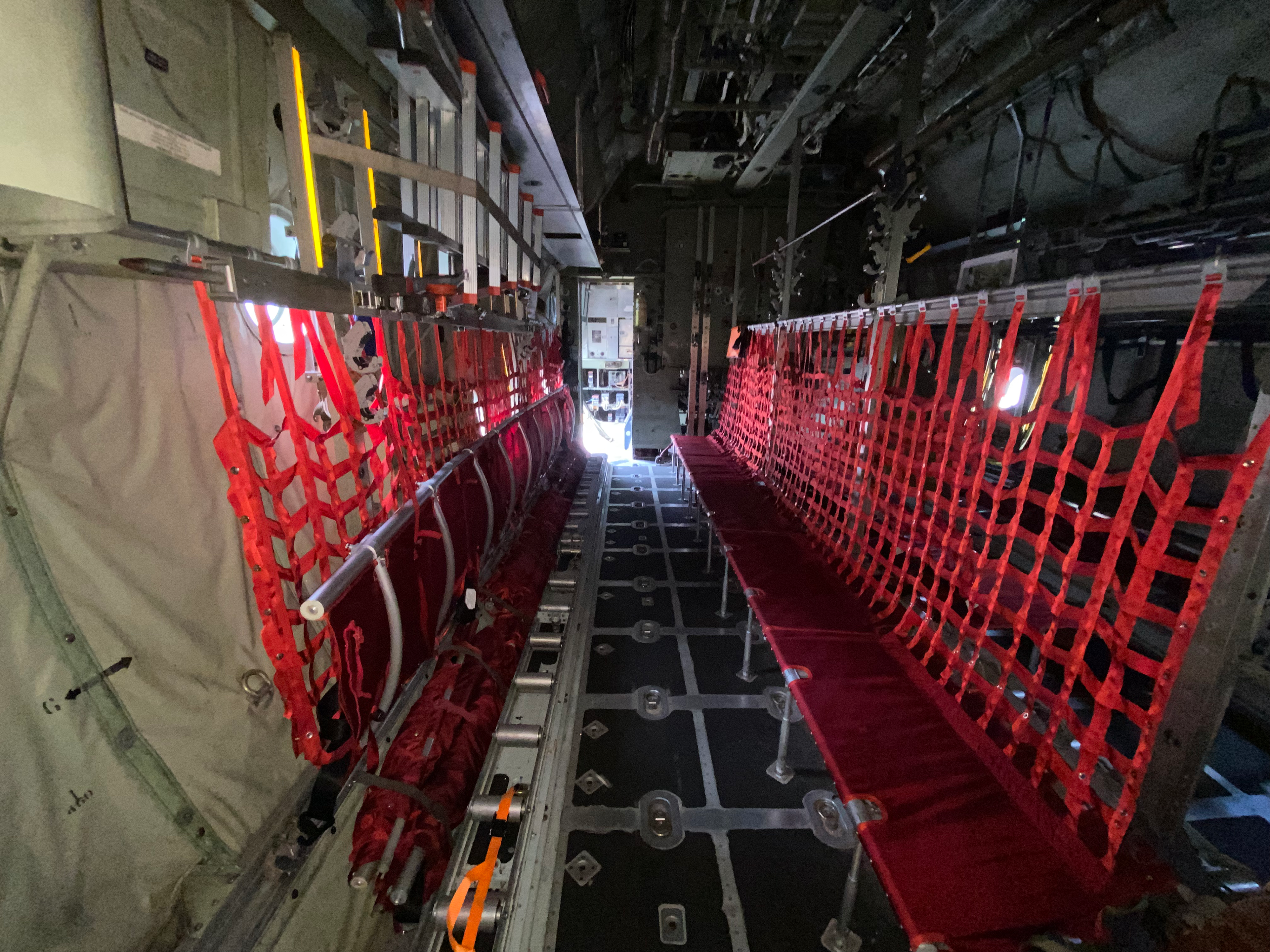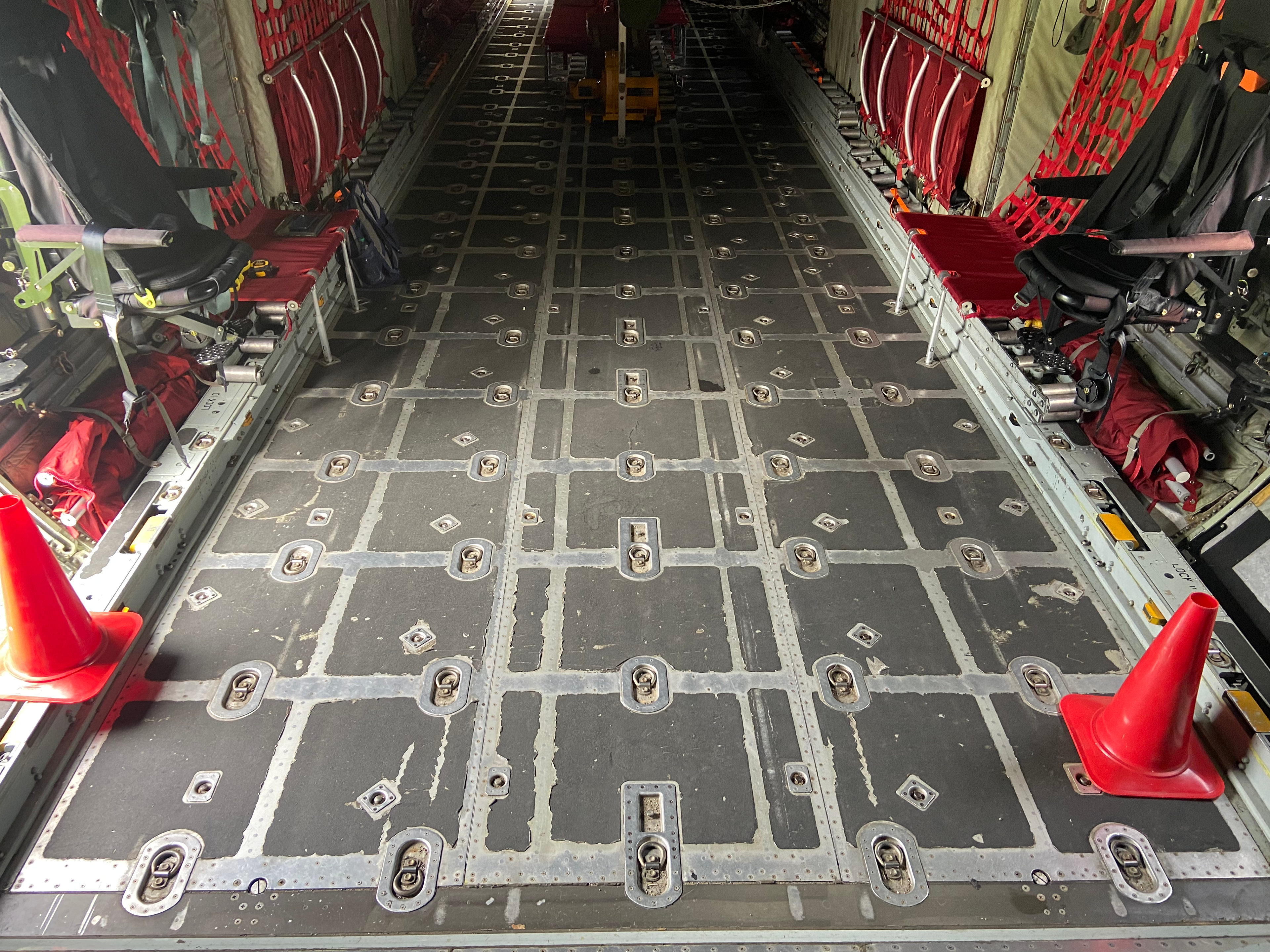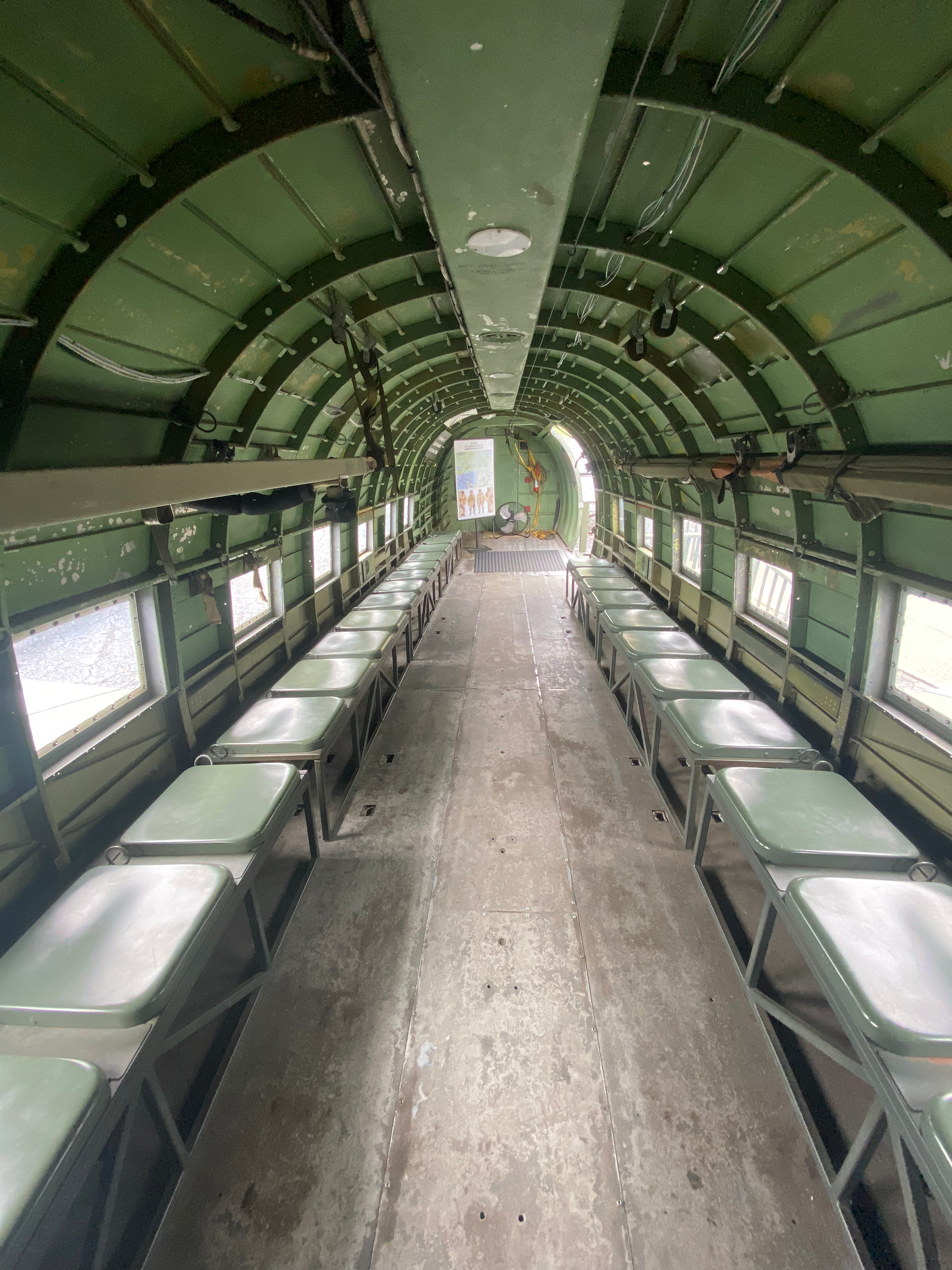Ohio State partnered with Battelle to challenge me for my senior capstone. The challenge was to design for the following prompt, "When it comes to a mass casualty or rescue event, how could any capable person, civilian or soldiers, safely and efficiently transport an injured person to receive care?"
The main goal was to pursue the concept of transport and I interpreted that in a military sense. Securing litters/stretchers to cargo floors in aircrafts is a problems that directly halts and slows down the transportation of wounded soldiers in battle. CargoLock is my take on how design can intervene to solve this problem and improve upon current processes.
Tools Used: Adobe Sketchbook, Photoshop, Illustrator, Fusion360, Keyshot, CNC Milling, Wood processes
Duration: 15 weeks
Phase One: Research
The capstone started off with what I call my "Newspaper" the goal was to take four categories, focus, science/tech, art, and business. Summaries and analyses were done for each article so that I could wrap my head around what I was reading and relate it back to what I was focused on. The goal was to do research not directly related to the topic in hopes to give a wider breath of information and different perspectives from worlds that may not seem similar to the military in this case.
From weeks 1 to 4 as research was done for the newspaper, it was also done directly on the topic. Alongside that a Conjecture was done at the end of each week to take the ideas found in each section and create an early "outside the box" concept as to what the user might want to pursue.
The results of each section follow the same order and can be seen below.
While this was happening a research plan, topic, and a survey were being put together. The topic was ever-changing throughout the process, but at the beginning the survey was one of the main ones to gain insight and the plan and topic looked like.
Objective: Gather information and insights for the design and development of a new cargo floor D-ring addressing challenges in securing litters in military cargo aircraft.
Research Questions:
Current methods for securing litters in military cargo aircraft?
Challenges and limitations of existing systems?
Safety and regulatory standards for securing litters in military aircraft?
Materials and technologies used in secure cargo systems?
Existing innovations influencing the design of CargoLock?
Methodology:
Literature Reviews
Interviews and Surveys:
Case Studies:
Regulatory Analysis:
Technology and Materials Research:
Competitor Analysis:
Investigate existing products addressing similar challenges.
Timeline:
Weeks 1-2: Literature review and initiate interviews.
Weeks 3-4: Complete interviews, analyze data.
Weeks 5-6: Investigate case studies, analyze regulations.
Weeks 7-8: Research technologies and materials.
Weeks 9-10: Perform competitor analysis.
Weeks 11-12: Synthesize findings, draw initial conclusions.
Weeks 13-15: Prepare a comprehensive report summarizing research, outlining insights, and informing the design and development of CargoLock.
The goal was to explore litters, how they were used, the carrier/carried experience, and the relationship they have with their surroundings.
The most interesting part of the research phase was finding information. Obviously anyone can go on a browser and find answers, but getting as hold of people with first hand experience in the military was much harder than expected. I reached out to my own school's ROTC program as well as Cincinnati's and Kent State's with no success from them. I then took to online platforms like Facebook, Reddit, and other military web forums where I can get in contact with a group of current military and/or veterans to try and learn more. Surprisingly the people online were not very receptive as they thought I was spam, or trying to steal their data. I got answers from a handful of people and learned a lot from them, but also learned how protective those that have served can be about their time and experiences if they don't know or don't trust you.
Phase Two: Exploration
At this point the initial research portion is over, but will continue into the manufacturing phase as the project is continuously changing as I learn more things. The initial exploration started by making a Gannt chart so I could gauge how much time I needed in which area and what kind of pace I needed to be on.
At this point my current topic seemed to lack reasoning and didn't have enough behind it to really stand on its own feet. I ended up taking a trip to MAPS Air Museum in Akron, OH, where I got to see all sorts of different military aircrafts. I got to go on a C-130 and C-47 where I could compare the differences between different era cargo planes as well as observe what exactly is going on in the plane. I brought my own cord and securing processes to do some formative assessments on the securing process for the people on these planes and I found that there wasn't a problem with the floors like I initially thought. However, it came to me that the problems actually lay in the relationship litters have. Whether it be soldier loading them into the plane, securing them on the floor, or stacking them in a stanchion, the problem laid in the interactions between soldiers and stretchers.





The project had officially shifted gears it was time to rework the plan and the topic. Where the project deadlines had more or less shifted back the topic was totally changed to,
The current mechanisms in place create a hassle when loading and securing litters.
It was time again to formatively assess to the problem statement. I needed to create something to act as a litter and something that acted as a cargo floor so I could test the current methods of securing litters as well as any other way I could think of so I could begin designing.
From here results had to be analyzed to figure out what exactly I learned from these tests and what is the process going forward. My tests were to determine the best materiality, location of security, and speed. To find a way to find the best of each category and combine each category into one system.
What I found was nylon was the best material, near the handle grip was the most efficient location if I can integrate it into the litter, and both these things accounted for the most security and speed. From here the problem presented itself as simple, something that didn't need overthinking. The solution was right in front of me. Creating a system of pre-existing commonly found objects in this realm. From there it came down to how to integrate it into a litter and make it so that it could translate to any litter any medevac team uses.
Litters were bought and a portion of a C-130 floor was replicated and any new parts were 3D printed.
With all of the base parts created or obtained it was time to put it all together with the CargoLock system cutting the current ratchet securing process in half with it only taking roughly 20 seconds to firmly secure a litter to a cargo floor of an aircraft.
Below you will find final images along with the product video and digital poster for CargoLock.